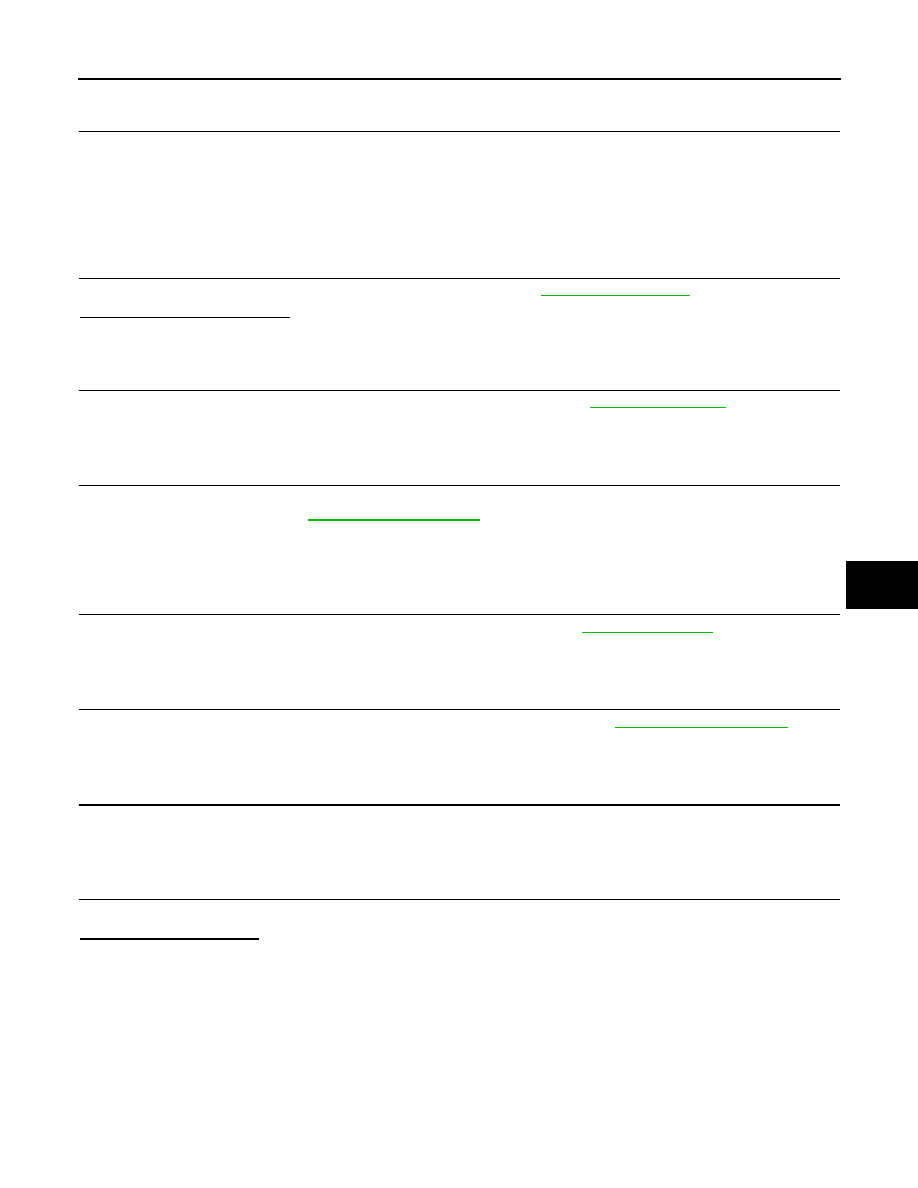Infiniti QX56 (Z62). Manual - part 769

DIAGNOSIS AND REPAIR WORKFLOW
HA-17
< BASIC INSPECTION >
C
D
E
F
G
H
J
K
L
M
A
B
HA
N
O
P
>> GO TO 2.
2.
SYMPTOM CHECK
Check the symptom from the customer's information. Check that any symptom occurs other than the inter-
viewed symptom.
Insufficient cooling/heating>>GO TO 3.
Refrigerant leakage>>GO TO 6.
Noise >> GO TO 7.
3.
CONTROL SYSTEM DIAGNOSIS
Perform the system diagnosis for the A/C control system. Refer to
.
Is A/C control system normal?
YES
>> GO TO 4.
NO
>> GO TO 8.
4.
PERFORMANCE TEST
Perform the performance test. Check the operation of each part. Refer to
>> GO TO 5.
5.
TROUBLE DIAGNOSIS FOR UNUSUAL PRESSURE
Diagnose using a manifold gauge whenever system's high and/or low side pressure(s) is/are unusual. Specify
the malfunctioning part. Refer to
.
Low refrigerant charge>>GO TO 6.
Except above>>GO TO 8.
6.
CHECK REFRIGERANT FOR LEAKAGES
Check refrigerant for leakages. Specify the malfunctioning part. Refer to
.
>> GO TO 8.
7.
TROUBLE DIAGNOSIS FOR NOISE
Perform trouble diagnosis for noise. Specify the malfunctioning part. Refer to
>> GO TO 8.
8.
MALFUNCTION PART REPAIR
Repair or replace the malfunctioning part.
>> GO TO 9.
9.
REPAIR CHECK (OPERATION CHECK)
Check the operation of each part.
Does it operate normally?
YES
>> INSPECTION END
NO
>> GO TO 2.